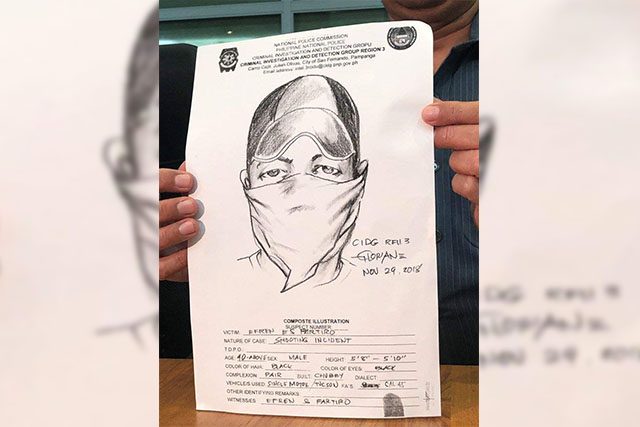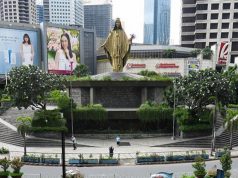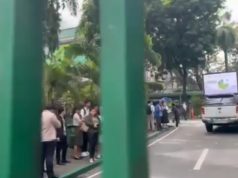
Philippine National Police Chief Director General Oscar Albayalde defended the composite sketch of the suspect who killed a businessman in Subic and reasoned that it was based on what an eyewitness saw.
The sketch was released to the public to help authorities identify the gunman who killed auction firm leader Dominic Sytin in Subic Bay Freeport Zone last Wednesday.
PNP Region 3 Director Jigs Coronel showed the sketch that contained additional information on the suspect’s physical characteristics.
Authorities believed he is around 40-years-old with a height of between 5 feet and 8 inches to 5 feet and 10 inches. He is also described as having a “chubby” build, a fair skin tone and black hair.
Albayalde justified the sketch after receiving criticisms that the suspect cannot be identified since his face is covered.
Parang eng-eng yung sketch. Crime-solving in 21st century Pilipins. 🙄 https://t.co/DyrYvssEST
— Raquel Fortun (@Doc4Dead) November 30, 2018
PNP should have considered holding off releasing this sketch. There's nothing the public can pick up on it. I believe they already have leads. Let's pray they get this coward pic.twitter.com/CMmhYF4z4i
— Arnaldo (@withonespast) November 30, 2018
Albayalde explained in a press briefing:
“Unang-una, iyon ang kita eh. We cannot invent a face. Iyon talaga ang suot niya kasi eh. Hindi natin pwedeng (baguhin), ganoon ang pagka-describe niya (witness). Baka hindi niya tinanggal iyan (mask and cap) all the way.”
“This person is wearing a mask, so how can we paint an artist sketch na gagawa na lang ng kung anu-anong itsura? Mali naman siguro iyon.”
“Most probably kasi tayo, na-re-recognize tayo sa mata kahit na half of our face is covered. Iyan ang hinahabol natin.”
While the PNP chief was criticized for releasing the sketch, a Facebook user named Jose Antonio Custodio agreed with his decision.
He reminded the public that it is a “policy to do so because any amount of evidence and data is useful if matched with other physical attributes and movements.”
“The physical characteristics of the eyes can be matched with existing or recorded databases collected from CCTVs,” Custodio wrote.
On composite sketches
Under PNP’s operational procedures handbook, police officers are supposed to document anything that is relevant to the crime in the form of photos, sketches, notes and video.
Sketches of crime scenes and suspects are supposed to be documented in the entirety of the investigation to ensure proper operation.
In order for a suspect to be identified, the following must be obtained: Physical evidence from the crime scene, testimonies from eyewitnesses and composite sketches.
Composite sketches, however, are not considered as exact “portraits” of the suspect, according to a blog run by a forensic artist.
It is “a hand-drawn or digitally created image of a suspect (that is) made by combining separate facial elements into one finished image.”
The blog added that composite sketches are the result of what the witness saw, not what the artist personally envisions or sees. It continued:
“Under the best of circumstances, it’s more likely that we (the artists) are going to get a general resemblance to the suspect, something that looks close to what that person looked like.”
“A composite has done its job if it catches someone’s attention long enough to have them consider whether the image looks familiar to them, and then calls in a tip to the police.”
The case at hand
Last Wednesday, businessman Dominic Sytin was killed in front of the Lighthouse Hotel along Waterfront Road at Subic Bay Freeport Zone.
He was the chief executive officer of the United Auctioneers, Inc., chairman of Foton Philippines and director and chairman of LMG Chemicals Corp.
Sytin’s death has been condemned by senators who have filed a resolution last Monday to urge PNP to fully investigate the matter.
Senate Majority Leader Miguel Zubiri said, “We condemn the dastardly heinous crime that happened to businessman Dominic Sytin and we urge the PNP … to use the full force of the law against these perpetrators, against these killers.”









